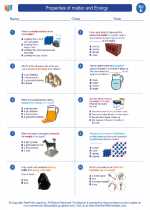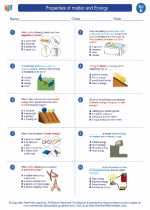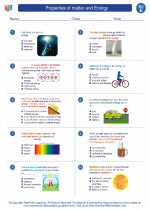Properties of matter and Energy -> genes
Genes: An Explanation and Study Guide
Genes are the basic unit of heredity in living organisms. They are made up of DNA and are responsible for the traits and characteristics that are passed down from parents to their offspring. Genes are located on chromosomes and are inherited from both parents.
Key Concepts
- Structure of Genes: Genes are made up of DNA, which is a long molecule composed of four types of nucleotides: adenine (A), thymine (T), cytosine (C), and guanine (G).
- Function of Genes: Genes contain the instructions for building and maintaining an organism. They determine traits such as eye color, hair texture, and susceptibility to certain diseases.
- Gene Expression: The process by which the information in a gene is used to create a functional product, such as a protein. Gene expression is tightly regulated and can be influenced by environmental factors.
- Genetic Variation: Different versions of a gene, called alleles, can result in variations in traits among individuals. This contributes to the diversity of living organisms.
- Genetic Inheritance: Genes are passed from parents to offspring during reproduction. The combination of genes from both parents determines the genetic makeup of the offspring.
Study Guide
As you study genes, here are some key points to focus on:
- Describe the structure of DNA and how it relates to the structure of genes.
- Explain the process of gene expression and how it leads to the production of proteins.
- Discuss the concept of genetic variation and how it contributes to the diversity of traits within a population.
- Explore the inheritance patterns of genes and how they determine the traits of offspring.
- Consider the ethical and social implications of genetic research and technologies.
Understanding genes is fundamental to comprehending the mechanisms of heredity and the diversity of life on Earth. As you delve into this topic, be sure to grasp the intricate connections between genes, traits, and inheritance.
[Genes] Related Worksheets and Study Guides:
.◂Science Worksheets and Study Guides Fifth Grade. Properties of matter and Energy
Study Guide Properties of matter and Energy
Properties of matter and Energy  Worksheet/Answer key
Worksheet/Answer key Properties of matter and Energy
Properties of matter and Energy  Worksheet/Answer key
Worksheet/Answer key Properties of matter and Energy
Properties of matter and Energy  Worksheet/Answer key
Worksheet/Answer key Properties of matter and Energy
Properties of matter and Energy  Vocabulary/Answer key
Vocabulary/Answer key Properties of matter and Energy
Properties of matter and Energy  Vocabulary/Answer key
Vocabulary/Answer key Properties of matter and Energy
Properties of matter and Energy 

 Worksheet/Answer key
Worksheet/Answer key
 Worksheet/Answer key
Worksheet/Answer key
 Worksheet/Answer key
Worksheet/Answer key
 Vocabulary/Answer key
Vocabulary/Answer key
 Vocabulary/Answer key
Vocabulary/Answer key

The resources above cover the following skills:
PHYSICAL SCIENCE (NGSS)
Matter and Its Interactions
Students who demonstrate understanding can:
Develop a model to describe that matter is made of particles too small to be seen.